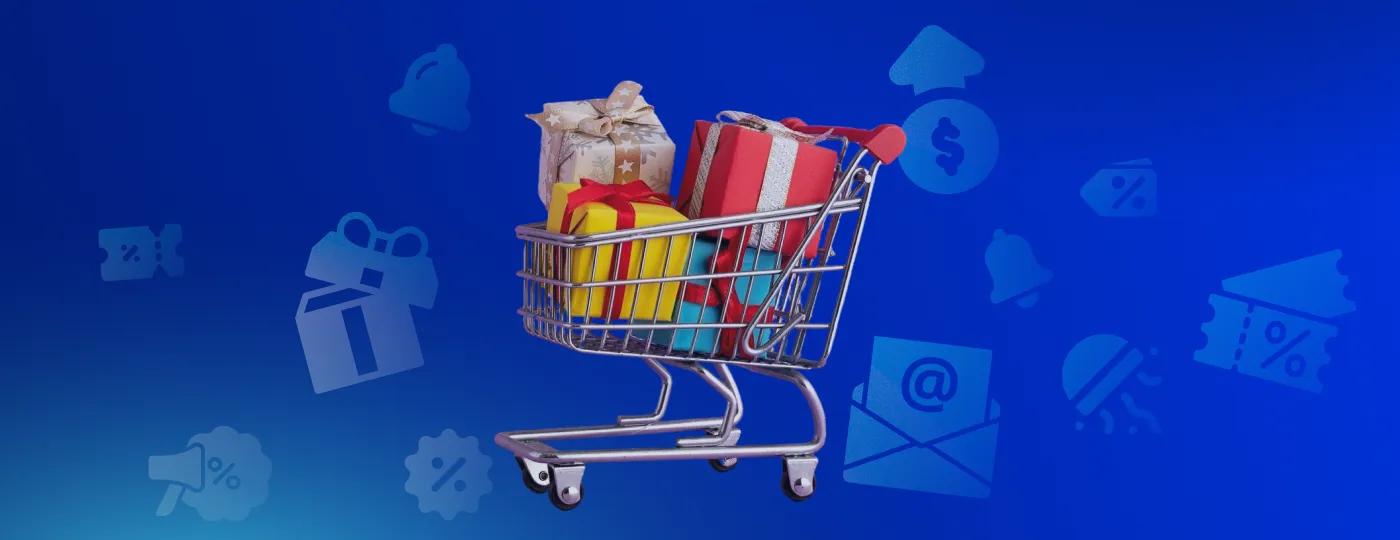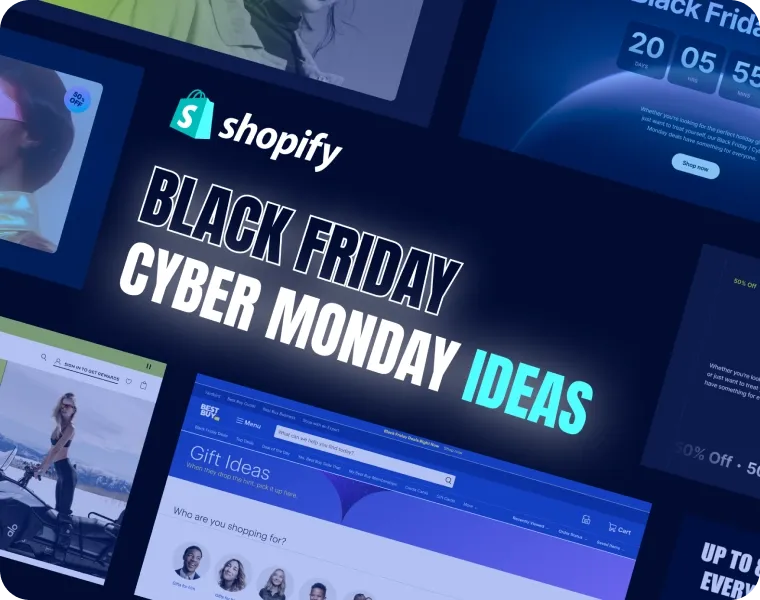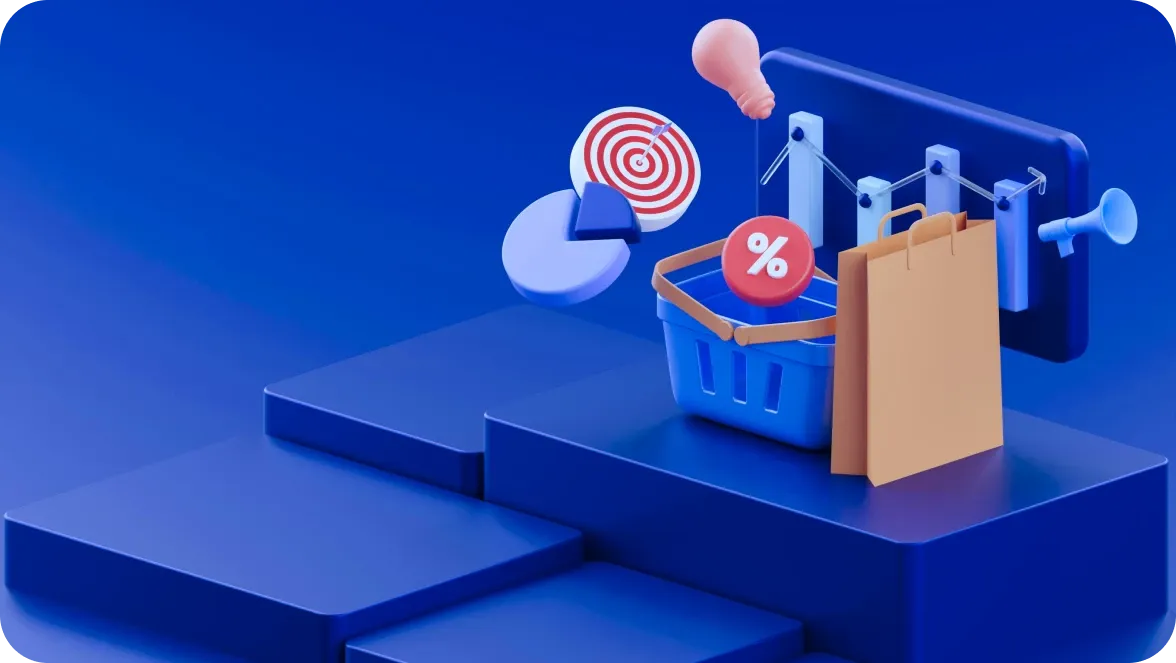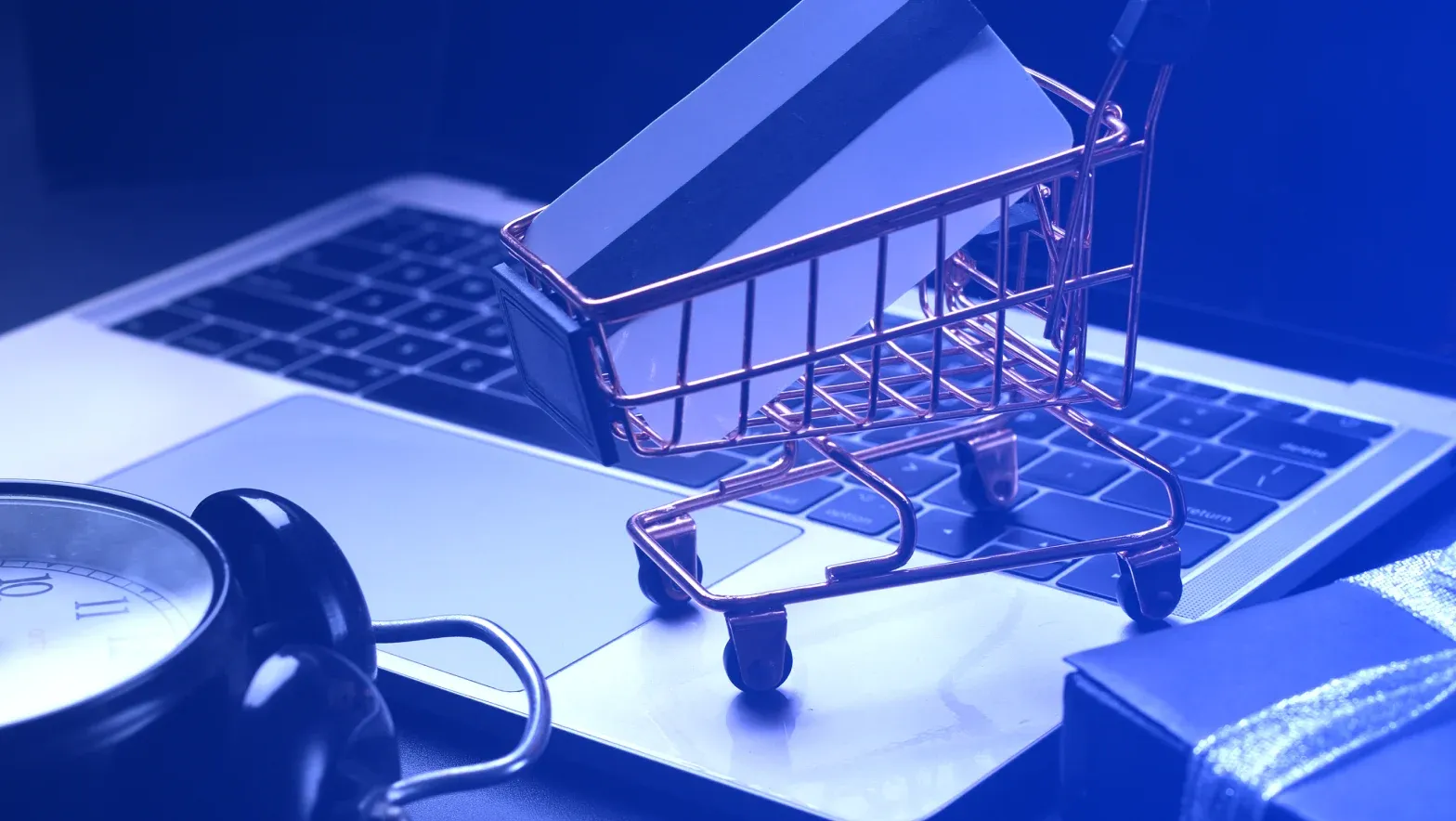
Standing out among thousands of festive campaigns can be challenging. If you’re unsure how to capture attention, boost conversions, and prepare your store for the surge in seasonal traffic, this guide is for you.
Below, you’ll find 12 actionable holiday promotion ideas and 10 emerging ecommerce trends that help you plan smarter, engage customers authentically, and turn the busiest shopping months into your most significant sales opportunity. From giveaways and loyalty programs to emerging trends in ecommerce, such as personalization via AI, will help your brand increase ROI and transform seasonal buyers into year-round customers.
Here’s a list of effective tactics to use during the coming holiday season:
Importance of holiday marketing for sales
Before diving into specific holiday sales promotion ideas, it’s important to understand why holiday marketing matters. Here are the key reasons to implement seasonal marketing strategies for your brand.
Peak customer spending. Shoppers have their best buying opportunities during the holiday season, whether it is presents and decorations, or necessities and luxuries.
Increased online engagement. The level of social media activity during the holidays goes through the roof, giving businesses a greater chance to reach more people with creative, shareable campaigns.
High product demand. Interest in seasonal products, limited-edition, and festive collections is at its peak, making this the best opportunity to increase visibility.
Early shopper advantage. Most customers prefer to shop before the rush. Early campaigns capture these sales while reducing pressure during Black Friday and December peaks.
Emotional connection. Holiday marketing triggers emotions of happiness, thankfulness, and nostalgia, helping brands establish long-term emotional connections with their customers.
Competitive edge. The special deals, narratives, and visuals attract customers and make the brands shine brighter than their competitors during the busiest period of the year.
Hype for big shopping days. Early Black Friday/Thanksgiving strategies help build hype and attract early-time shoppers before the high shopping weekends.
Maximized year-end profits. Good promotions and personalized experiences can significantly increase conversions, making the end of the year profitable.
Stronger brand loyalty. Consistent, thoughtful holiday marketing fosters customer trust and encourages repeat purchases after the holidays.
12 Holiday marketing ideas
Let's examine 12 proven holiday selling ecommerce tips to engage customers, increase conversions, and create memorable shopping experiences.
#1 Launch engaging holiday giveaways
Make your holiday season a topic of conversation by opening giveaways that turn scrollers into active users. Consider planting seeds across your socials – each like, share, and tag will be a branch toward new potential customers.
A coffee roaster, for example, could offer a “12 Days of Coffee” prize package where participants submit their morning routine photos. This kind of interaction is the essence of modern holiday campaign ideas – authentic engagement that expands your reach organically.
#2 Incentivize purchases with free gifts and free shipping
Avoid framing shipping costs as a gain; instead, position them as obstacles you are removing. For instance, a cosmetics company might do promotions like “Spend $45 on your cart, and get free shipping, plus a deluxe sample on the house!” or, a home décor brand might offer “Free shipping on all orders over $75” and promote it as a limited-time holiday reward rather than a regular perk.
The secret of this holiday ecommerce strategy is to set your minimum slightly higher than your average order value so you can encourage customers to purchase one additional product, boosting more conversions and customer satisfaction.
#3 Create bundle deals
Develop product combinations that solve complete problems rather than selling individual pieces. A gardening supply store might package a “Winter Planter Kit” that has pots, soil, bulbs, and fertilizer. Frame bundles as curated experiences rather than random groupings for maximum appeal.
For example, as shown in the screenshots, our client, Luma Nutrition, successfully applies this approach by offering thoughtfully curated nutritional bundles. This is one of the most practical holiday ecommerce tips for increasing cart values while moving multiple SKUs simultaneously.
#4 Sell gift cards
Package digital gift cards with festive email templates that customers can personalize, add a message, and schedule for delivery on the exact holiday. For example, ecommerce stores can create limited-edition digital card designs that align with their holiday lines, such as a winter-themed card featuring warm sweaters or sparkling jewelry. Or, fitness brands may advertise gift cards as a clean slate at the beginning of the year, which would resonate with customers seeking to instill positive motivation and self-care in their loved ones.
For more inspiration, explore creative ways to design and promote gift cards in our guide on using Shopify gift cards for Valentine’s Day.
#5 Introduce a holiday referral or loyalty program
The holiday season is the best time to introduce holiday-themed referral or loyalty programs. Introduce referral or loyalty programs that incentivize users with features like discounts or festive products. “Get $50 off when you refer a friend” or “Unlock early access to our Boxing Day sale when you refer three friends” are good examples of holiday-themed referral programs. Such programs encourage current customers to share the news, attract new customers, and increase sales during the holidays.
#6 Install countdown timers
Create urgency and excitement by displaying countdown timers in your emails, on-site banners, or social stories. A specialty tea company may run a “7 Days Until Our Harvest Sale” campaign, with a timer displayed in a navigation bar. This constant reminder transforms passive knowledge into action, training customers to come back before it is too late and creating joint excitement around a deadline.
#7 Add product recommendations
Use popups to suggest items based on visitors’ browsing behavior. For example, when a user spends time on a product page, a popup with similar or complementary products could be displayed. A clothing store would display similar accessories when a customer sees a dress, or a pet shop would recommend treats and toys when a person is browsing dog beds. This level of personalization keeps shoppers engaged, boosts conversions, and tailors the shopping experience to their needs.
#8 Offer custom gift wrapping as an upsell
Augmenting your average order value occurs when you include delightful and unique solutions to a customer’s holiday shopping challenges. Offering gift wrapping as a paid add-on at checkout can optimize your holiday sales, with pricing ranging from $3 to $8 based on your products.
A bookstore can use wrapping paper with a literary theme and fancy ribbons, while a gourmet food store can use decorative gift boxes as wrapping. Custom gift wrapping is one of the most effective ecommerce holiday marketing ideas, as it not only generates extra revenue but also improves the gifting experience, helping your brand be memorable when recipients unwrap their presents.
#9 Recover abandoned carts
Consider abandoned carts as the breadcrumbs left by customers as they go, as a trail of their intent. Use follow-up emails, retargeting ads, and gentle reminders to bring them back. A home décor brand may run ads that say "Your living room is calling," retargeting users who left a velvet armchair behind. A persistent yet respectful presence of your products that keeps them in consideration often leads to high recovery rates.
#10 Personalize holiday email campaigns
Substitute general emails with messages based on what customers have bought or browsed. In this context, audience segmentation can be based on past purchases, including frequent buyers, holiday shoppers, and first-time visitors.
An electronics store can suggest travel accessories to customers who purchased earbuds as a travel case suggestion: “You loved your earbuds–try this significant travel case when you take them on vacation.” Unlike standard holiday marketing campaign ideas, this approach shows that you’re listening, boosting engagement and customer appreciation.
#11 Ask for post-purchase feedback
Send short, focused surveys immediately after a purchase. Inquire about satisfaction, experience on the site, and what prevented purchase. A small offer, such as a 10% discount on their next order, can increase participation and provide you with valuable feedback on how to improve the next campaign. This is one of the innovative holiday advertising ideas, as it ensures steady improvement through honest customer feedback.
#12 Partner with influencers
Collaborate with influencers who already reach the audience you want. You do not need to pursue mega-influencers; you can target micro-influencers with small, niche audiences who share your brand's values. For example, a sustainable fashion brand could collaborate with other environmentally conscious lifestyle creators who present festive outfits. This approach reflects evolving holiday marketing trends that prioritize authenticity over reach, building credibility through genuine storytelling.
10 Ecommerce trends to keep in mind before the holiday season
Here are 10 key holiday marketing trends to consider before launching your holiday campaigns:
AI quietly manages the operations that matter most
Currently, critical back-office functions that are profit-making are handled by AI. It predicts demand using purchase patterns and weather data, prevents fraudulent transactions before they occur, and addresses customer needs with virtual assistants. This unseen intelligence ensures operations run smoothly and builds customer confidence.
Social platforms have transformed into storefronts
Social media has transformed from marketing into direct selling. TikTok Shop, Instagram Shopping, and live-stream commerce turn engagement into transactions. Social commerce is no longer an option.
Personalization has become the baseline expectation
Customization is no longer a choice; it forms the basis of the contemporary stores. The dynamic product bundle is based on purchase history and location. The price and recommendations change automatically as the customer browses. Customers are kept in well-personalized stores; they are lost in poorly personalized ones. AI powers personalization across the shopping journey, from product suggestions to ads and support, making every interaction feel tailored.
Subscription models create stability and deepen loyalty
Recurring models have now prevailed over streaming. Coffee, pet food, and fashion brands have adopted subscription models to establish a steady stream of revenue and stronger customer relationships. The retention is always better than acquisition.
Immersive technology makes online shopping tangible
AR and VR are ubiquitous shopping technologies. Customers can visualize furniture at home, virtually try on clothes, and instantly test makeup shades – the result: assured customers, quicker sales, and reduced returns.
Success means thinking globally while acting locally
Sales across borders are becoming increasingly popular; however, customers still demand local experiences. Show local-currency prices, offer regional shipping, and display taxes on the first page. Their international presence is meaningless unless it has local relevance.
Sustainable practices influence purchasing decisions
Eco-conscious shopping forms the core of purchasing. Customers are concerned about minimal packaging, carbon-neutral delivery, and online receipts. Misguided packaging decisions hurt the brand image, irrespective of the product quality.
Payment experiences are now seamless and instant
Friction on payment is eliminated. No biometrics to enter, no password to type, and flexible payment options make the purchasing process hassle-free. Long forms are a competitive disadvantage.
Seamless online-offline integration drives convenience
Customers want a unified experience across online and physical stores. Buy-online-pickup-in-store (BOPIS) and unified inventory are two technologies that enhance convenience and satisfaction.
Transparency around data builds lasting customer trust
Customers value transparency about how their data is used. Clear privacy policies, safe payment methods, and open communication create loyalty.
The bottom line
The holiday season is the ideal time for ecommerce brands to drive sales, build loyalty, and increase visibility. By combining giveaways and referrals, personalized emails, and influencer campaigns with trends such as AI personalization, brands can develop experiences that actually appeal to customers.
If you need help implementing the most effective holiday marketing strategies or leveraging tools, including AI integration to enhance ecommerce performance, contact DigitalSuits. We’ll help you craft a plan that delivers measurable results.
Frequently asked questions
When should I start holiday marketing campaigns?
To have a maximum effect, begin to develop your holiday marketing plan for the holiday at least 2-3 months ahead of the season. This will buy you time to build awareness, experiment with strategies, and attract early shoppers before the rush at the last minute.
Which types of holiday promotions are most effective at boosting average order value?
Holiday promotion examples like free shipping offers, bundle deals, and gift-wrapping upsells are helpful. Such offers prompt clients to buy additional products or extras, thereby increasing the value of the cart, which is popular during the holidays.
How can I use AI to create personalized shopping experiences during the holidays?
AI is used to tailor the marketing plan by analyzing customer behavior, so you can recommend products, segment your email marketing list, and dynamically adjust prices and offers, creating personalized experiences to increase your conversion rates.






































Was this helpful?
0
No comments yet